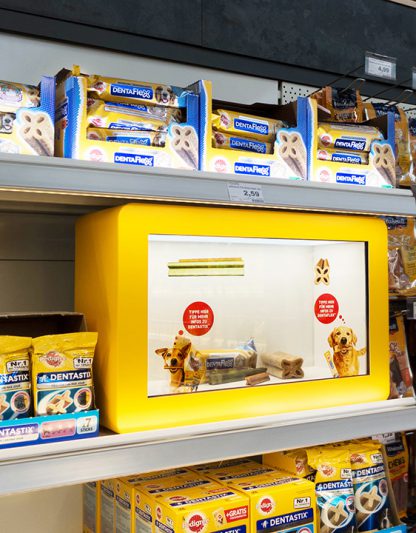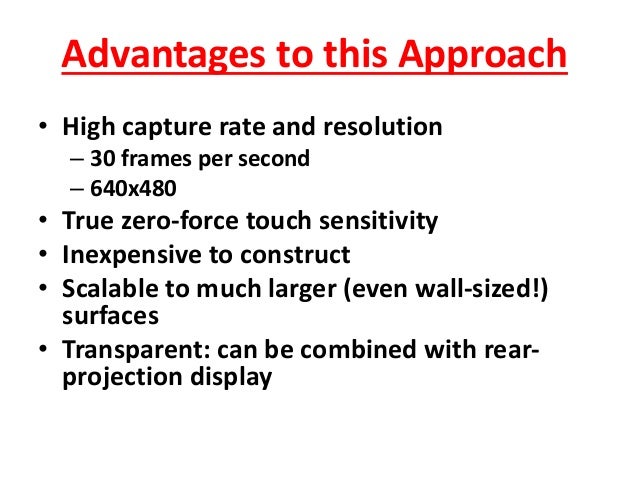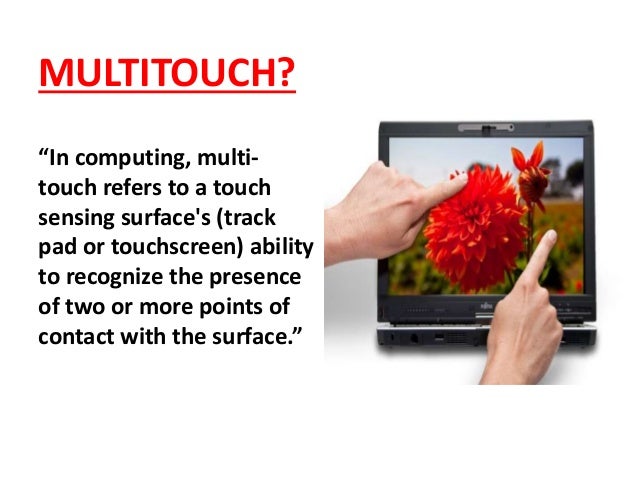

And don't expect the company to open-source that SDK in order to sell more hardware, either, because to do so would be to give away the company's core technology, which Korpela claims no other company currently duplicates.

MULTITOUCH SCREENS SENSE SOFTWARE
That price also includes a software development kit with which you can build your own apps, because MultiTouch doesn't make apps - just the platform. A single-unit display runs $17,500, although costs go down as an order scales up, because you only need one processor box to power up to 14 screens. That means it can interact with objects, while you interact with it, offering all sorts of possibilities, from virtual multiuser music instruments to collaborative 3-D editing software. In addition to recognizing touch, the MultiTouch can see 2-D tags and actual objects - a result of its lineage as an object-recognition system, which is what its creators originally thought it would be. But as a result, all of the images look really crisp up close - as well they should.
MULTITOUCH SCREENS SENSE PC
The 14-screen limit is due to the accompanying Linux PC only having room for seven dual-screen graphics cards. Instead, it lashes four to fourteen of them together, so there are seams. There is one drawback to this design: Because you touch these screens, you are, by necessity, standing beside one, and therefore MultiTouch could not use a single large screen. "The funny thing is that over 30 people from Microsoft actually came to meet us, since their applications were faster on our platform than on their own."
MULTITOUCH SCREENS SENSE FULL
"At CES in January, we announced full support for Windows Surface, so we can run Windows Surface applications on top of our platform," recalled Korpela. Korpela says even Microsoft employees are big fans. That's enough data to capture with precision not only every fingertip on your hands and your palms, but those of an entire group, so you can collaborate on a mural, examine satellite photos, and so on, as a group. The key differentiation between MultiTouch and other large touchscreen technologies such as Microsoft Surface is that MultiTouch is able to look through the LCD screen from the other side, using a combination of visible light and infrared, which it emits, whereas Microsoft Surface's projection technology offers lower resolution and responds far more slowly, especially with multiple users, according to Korpela.įor those familiar with the way a cathode-ray-tube display works, the setup of these MultiTouch units is an inversion of that familiar design: Instead of electron guns, a little camera sits a couple of feet behind each screen to capture everything that happens within the inch (or less - just about every attribute can be tweaked per application) of the other side of the screen, 120 times per second. As the company rolls out its efforts in the United States in the coming months, on the heels of a multitude of early successes in Europe, we're likely to encounter these massive touch-sensitive displays in more walks of life - and, possibly, the sidewalks of life, too. The best uses of these massive tablets is in a group setting, and other solutions exist - most notably Microsoft's Surface technology - but to date, according to MultiTouch general manager Timo Korpela, none have offered the high resolution and responsiveness to multiple hands necessary for the platform to take off in a big way.

Though they are probably too expensive to put one in your home, unless your home has been featured on Lifestyles of the Rich and Famous or Cribs. These screens maintain their sensitivity to touch even when mounted behind bulletproof glass up to one inch thick, which makes MultiTouch's screens equally suited to the board room, a university lab or public displays. But even larger touchscreens, like the one the Finnish company MultiTouch let us play around with last week, can track each fingertip of a large group of people - a key distinction that enables a more social set of behaviors, because multiple people can use them at the same time.

Apple appears to have been right in betting that people would embrace a big version of the iPod Touch the increased sense of intimacy with no keyboard or mouse chaperons is palpable.


 0 kommentar(er)
0 kommentar(er)
